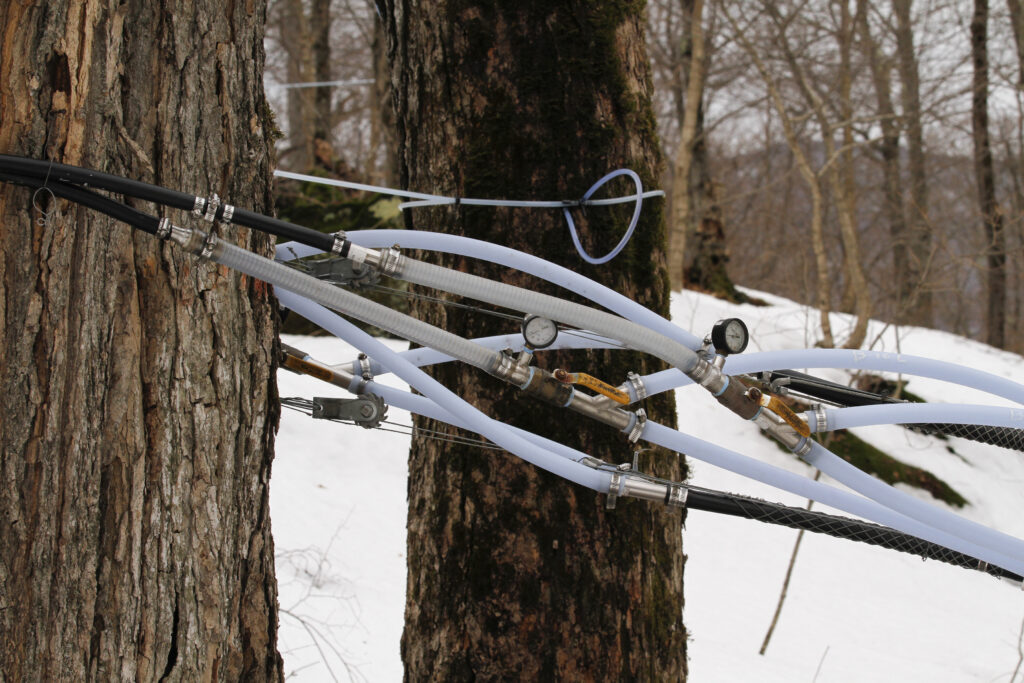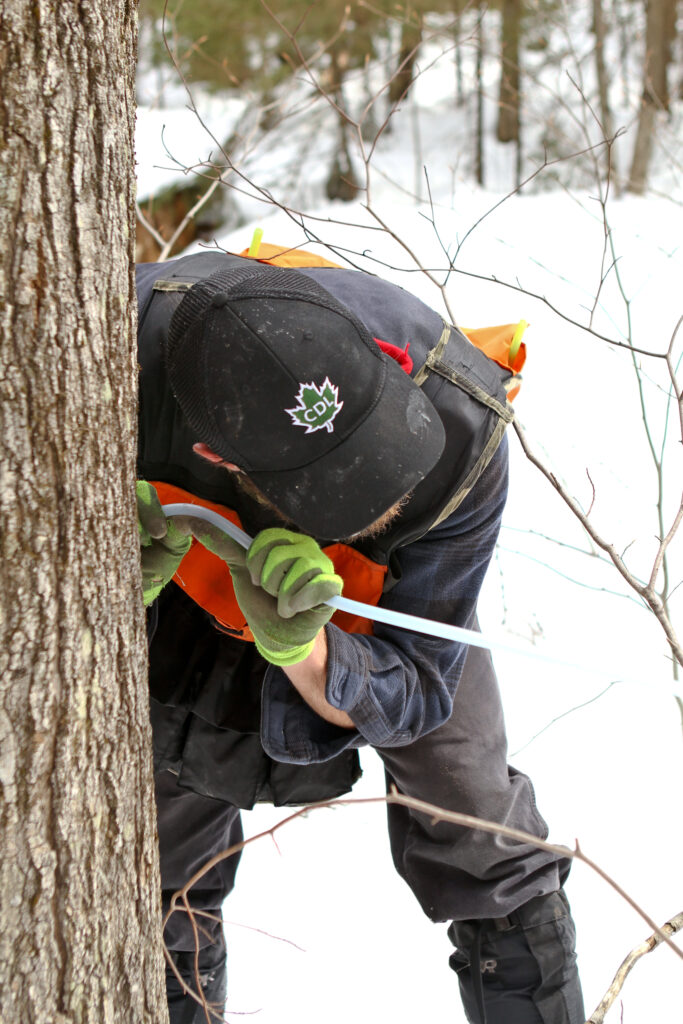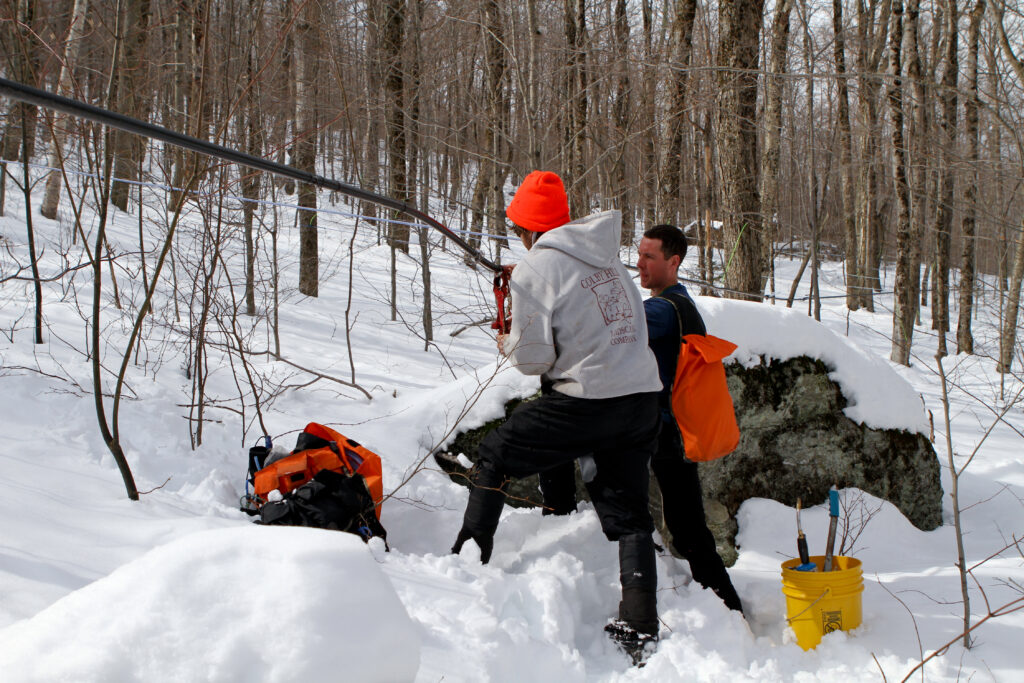Part II: The Sap Run
Once the sugarbush is fully tapped, we wait for the sap to run. For the tree to produce sap, temperatures need to cycle between above and below freezing. Traditionally, March was the month that most reliably saw those conditions and that is why it is known as the peak of sugaring, with festivals and open houses always scheduled to celebrate. In the past decade, however, climate change has upended the usual weather patterns and there is no such thing as typical. Some years have seen the biggest runs in February, with the whole month of March frozen solid. Others have seen the bulk of runs in April. The best we can do to prepare is be ready at the end of January and then wait and see.
When the sap starts to run, it is a race to capture every last drop. A typical run might be on a day when temps were just below 32 that night and then rise to a balmy 38 by the time the sun hits the mountain. The trees might take a few hours to feel the warmth but by late morning, it will start gushing into the sugarhouse. It might seem like all we need to do at this point is boil up the sap but the work in the woods has just begun.

The entire tubing network is on a vacuum system which basically means when the sap comes out of the tap, it gets assisted through the network by a large machine that pulls it toward the sugarhouse. The vacuum is only strong if it is a closed system and that is where things get challenging with the 600 miles of tubing in a natural forest. The tubing is constantly being damaged by falling branches, weather and animals. Squirrels, in particular can be devilish by chewing the tubing to get to the sweet sap. In one section, one year, we found that they chewed off all the taps and stored them in a tree hole. Since they could not possibly have found them tasty, we decided they were just a bunch of pranksters.

Because we usually only have about six weeks worth of sap runs to make a whole year’s worth of syrup, keeping the vacuum strong and capturing every drop is critical. When it starts to run, we can tell from gauges in the sugarhouse where the vacuum is low. The woods crew head out to that section to walk the lines and find the problems. Keep in mind that one section might consist of 12,000 taps. More gauges on each line help narrow it down but usually the entire area will be walked, looking, and more likely, listening for holes. When you get near them, a hissing sound will usually give them away. Sometimes a tap fell out or was missed. Sometimes there is damage the size of a pinprick in the middle of the line. Each hole that is plugged improves the vacuum and consequently the yield of sap.

Walking the lines is arduous work because there is likely still snow to slow you down and sometimes you can walk an area multiple times before you find where the problems lie. We also have spring storms that can take an area of beautifully tight vacuum and leave it with bad damage from fallen trees or branches. In that case, the crew goes back up to repair lines and reestablish the system. The woods work is never done until the season ends when we pull the taps. But that is for a later blog.
FAQs

